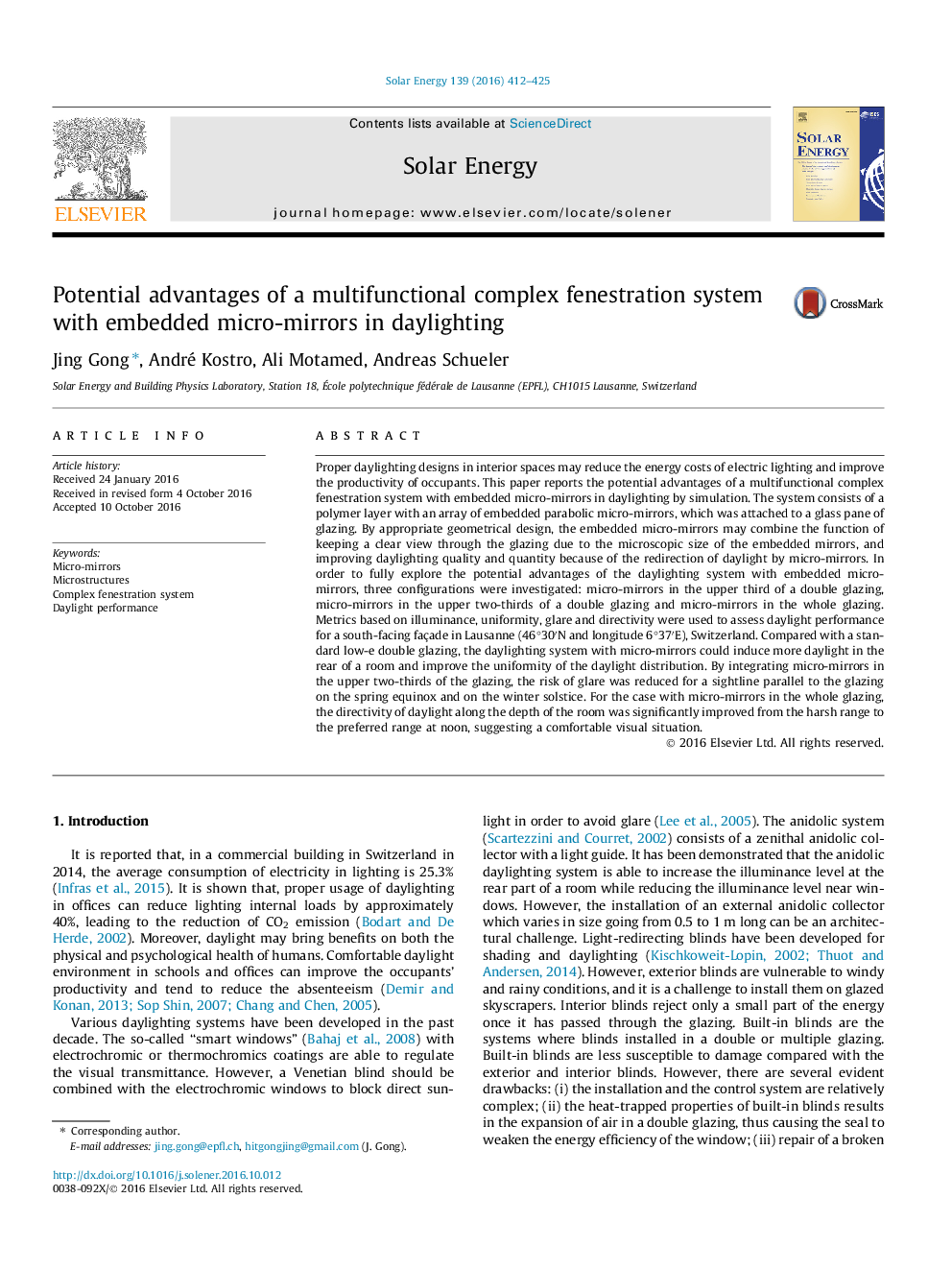| Article ID | Journal | Published Year | Pages | File Type |
|---|---|---|---|---|
| 5451402 | Solar Energy | 2016 | 14 Pages |
Abstract
Proper daylighting designs in interior spaces may reduce the energy costs of electric lighting and improve the productivity of occupants. This paper reports the potential advantages of a multifunctional complex fenestration system with embedded micro-mirrors in daylighting by simulation. The system consists of a polymer layer with an array of embedded parabolic micro-mirrors, which was attached to a glass pane of glazing. By appropriate geometrical design, the embedded micro-mirrors may combine the function of keeping a clear view through the glazing due to the microscopic size of the embedded mirrors, and improving daylighting quality and quantity because of the redirection of daylight by micro-mirrors. In order to fully explore the potential advantages of the daylighting system with embedded micro-mirrors, three configurations were investigated: micro-mirrors in the upper third of a double glazing, micro-mirrors in the upper two-thirds of a double glazing and micro-mirrors in the whole glazing. Metrics based on illuminance, uniformity, glare and directivity were used to assess daylight performance for a south-facing façade in Lausanne (46°30â²N and longitude 6°37â²E), Switzerland. Compared with a standard low-e double glazing, the daylighting system with micro-mirrors could induce more daylight in the rear of a room and improve the uniformity of the daylight distribution. By integrating micro-mirrors in the upper two-thirds of the glazing, the risk of glare was reduced for a sightline parallel to the glazing on the spring equinox and on the winter solstice. For the case with micro-mirrors in the whole glazing, the directivity of daylight along the depth of the room was significantly improved from the harsh range to the preferred range at noon, suggesting a comfortable visual situation.
Related Topics
Physical Sciences and Engineering
Energy
Renewable Energy, Sustainability and the Environment
Authors
Jing Gong, André Kostro, Ali Motamed, Andreas Schueler,
